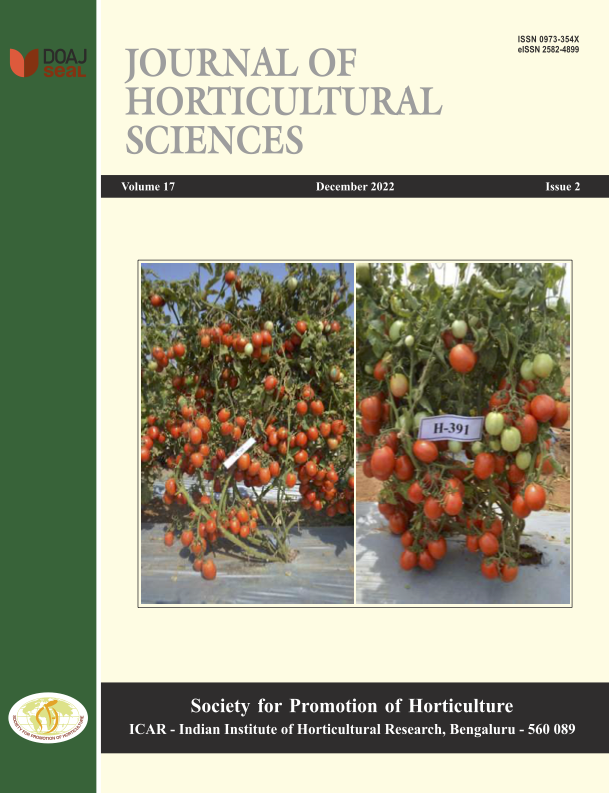Growth trend and potential of horticulture in Northeast India
DOI:
https://doi.org/10.24154/jhs.v17i2.872Keywords:
Export, GI tag, horticulture, linkages, sustainable developmentAbstract
The Northeast region of India is endowed with diverse soil and agro-climatic conditions that are conducive to the growth of a large variety of temperate and tropical horticultural crops. Fruits, vegetables, and spices of the region are highly nutritious and have a market within and outside the country. The paper is an attempt to assess the potential of horticulture in the region. To gauge the state-wise and regional growth trend and variability in area and production of these crops during the period 2009-2019, Compound Annual Growth rates and Instability Index have been computed from secondary data. The study reveals a rising regional growth trend with low instability for the production of fruits and vegetables and moderate instability for spices. This indicates the possibility of sustainable development of horticulture in all the Northeast states through strategic planning. Fruits and spices of the region also have a market in Middle-East and neighbouring countries. However, lack of commercialisation, poor market intelligence, and linkages are impeding the growth of exports. To unleash the true potential of horticulture, it is imperative to develop infrastructure, modernise farming and establish seamless value chains with greater market integration.
Downloads
References
Downloads
Published
Issue
Section
License
Copyright (c) 2022 Madhucchanda Dasgupta

This work is licensed under a Creative Commons Attribution-NonCommercial-ShareAlike 4.0 International License.
Authors retain copyright. Articles published are made available as open access articles, distributed under the terms of the Creative Commons Attribution-NonCommercial-ShareAlike 4.0 International License, which permits unrestricted non-commercial use, distribution, and reproduction in any medium, provided the original author and source are credited. 
This journal permits and encourages authors to share their submitted versions (preprints), accepted versions (postprints) and/or published versions (publisher versions) freely under the CC BY-NC-SA 4.0 license while providing bibliographic details that credit, if applicable.








 .
. 











